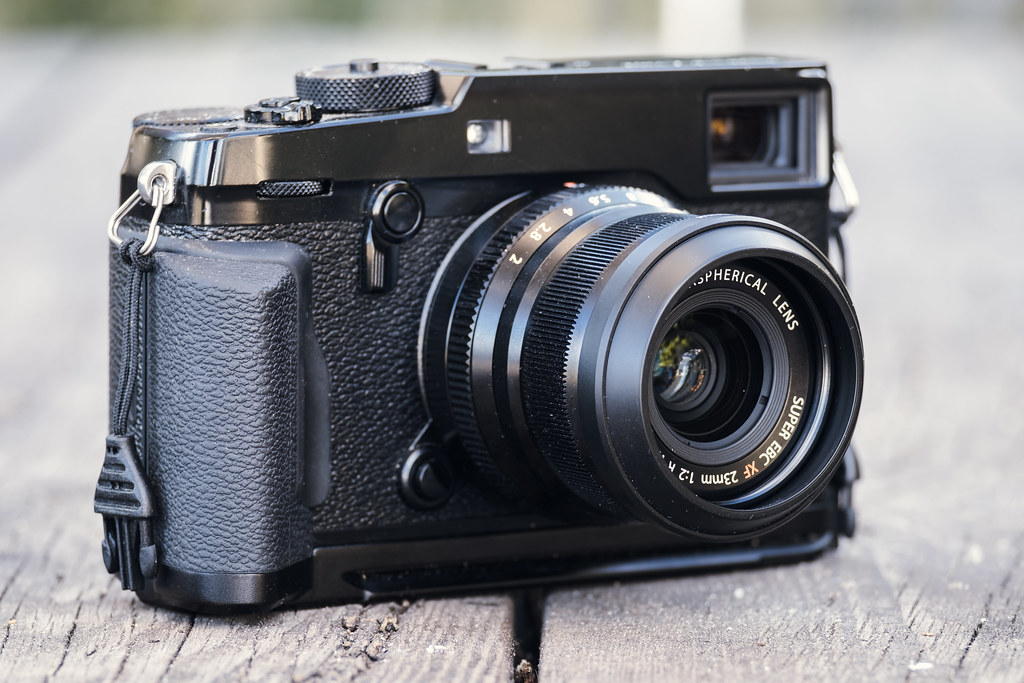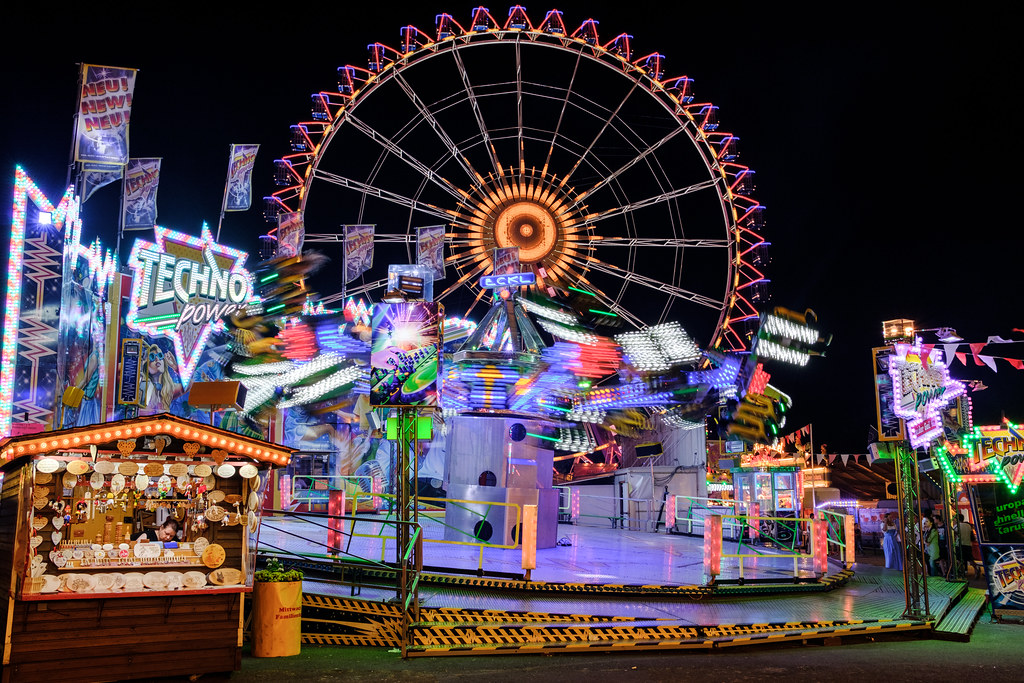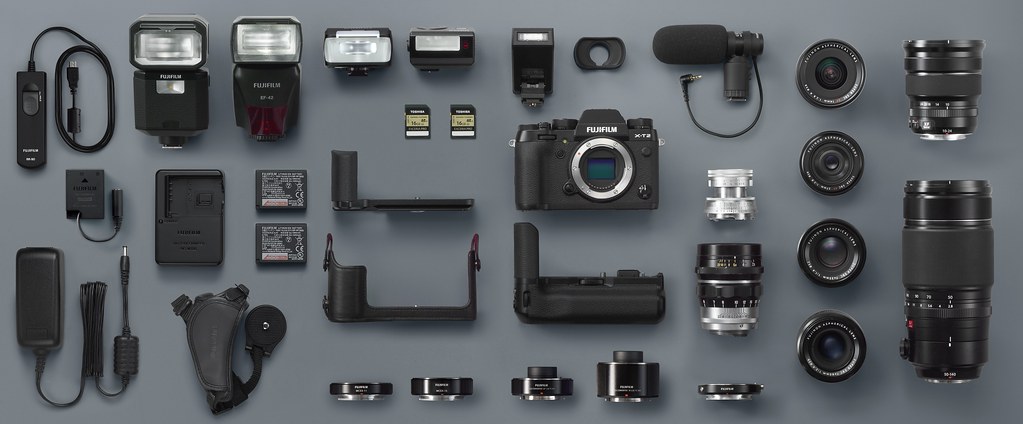Review
Fujifilm X-E3: So funktioniert das neue AF-System
Das verbesserte Autofokus-System der X-E3 (und X-T2 & X-Pro2)
Zu den wichtigsten Neuerungen der Fujifilm X-E3 zählt ihr verbessertes AF-System, von dem im November und Dezember auch Benutzer der X-T2 und X-Pro2 via Firmware-Updates profitieren werden. Fuji X Secrets konnte die neue Technologie bereits im Vorfeld ausprobieren.
von Rico Pfirstinger
- Hier klicken für 50 Fujifilm X-E3 SOOC JPEG Beispielbilder in voller Auflösung
- Hier klicken für 35 Fujifilm X-E3 Lightroom Beispielbilder in voller Auflösung
- Hier klicken für einen Vergleich der X-E3 mit der X-E2(S) und X-T20
- Hier klicken für ein Pro & Contra zur X-E3
Eine der größten Schwächen des bestehenden AF-Systems der X-Serie ist die auf Mustererkennung basierende Verfolgung sich bewegender Objekte. Hier geht es darum, dass die Kamera ein Motiv (Muster) zunächst als solches erfasst und die Fokusfelder dann automatisch nachführt. Der Fotograf muss das Motiv also nicht mehr mit einem zuvor ausgewählten Fokusfeld bzw. einer festgelegten Fokuszone manuell verfolgen.
Die entsprechende Funktion „Verfolgung“ steht X-Kamera-Benutzern (in Kombination mit AF-C) bereits seit der X-T1 und X-T10 zur Verfügung, und selbstverständlich gibt es sie auch in allen aktuellen X-Kamera-Modellen wie der X-Pro2, X-T2, X-T20 und X100F.
Das Problem dabei ist, dass die Motivverfolgung bisher weder besonders schnell noch zuverlässig arbeitet. Das hat vor allem zwei Gründe: Den Rest des Beitrags lesen »
Inside the Fujifilm GFX 50S
Thinking Big
by Rico Pfirstinger
Fujifilm expands to medium format, and people have questions: How fast is it? What about shutter shock? What kind of sensor is there? Is there a touch-screen display? What’s the resolution of the EVF? What about leaf-shutter support? Are the lenses optically corrected? And what about video? This report will help you out…
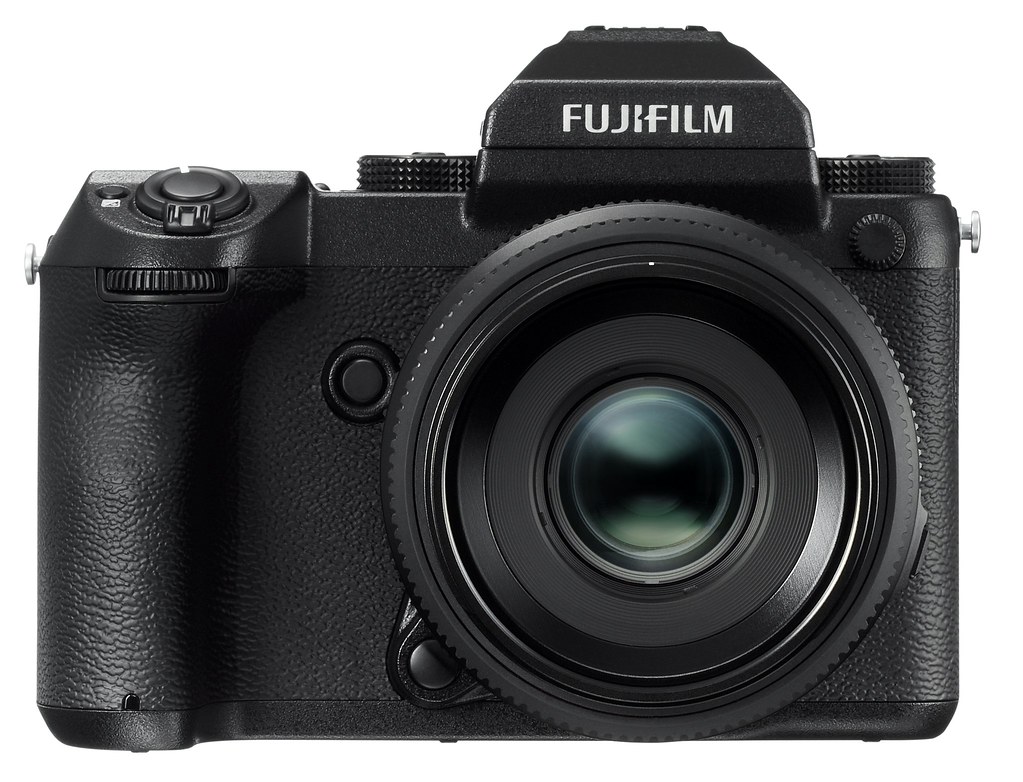
The mirrorless Fujifilm GFX 50S digital medium format camera features a 43.8 × 32.9mm sensor („G Format“) with 51.4 megapixels. The body and three Fujinon GF lenses will be available in spring, with three more lenses arriving later in 2017. The sensor is based on a Sony CMOS sensor that is known from similar offerings like the Hasselblad X1D. However, Fujifilm was able to incorporate several tweaks und improvements concerning the sensor’s light collecting ability and efficiency.
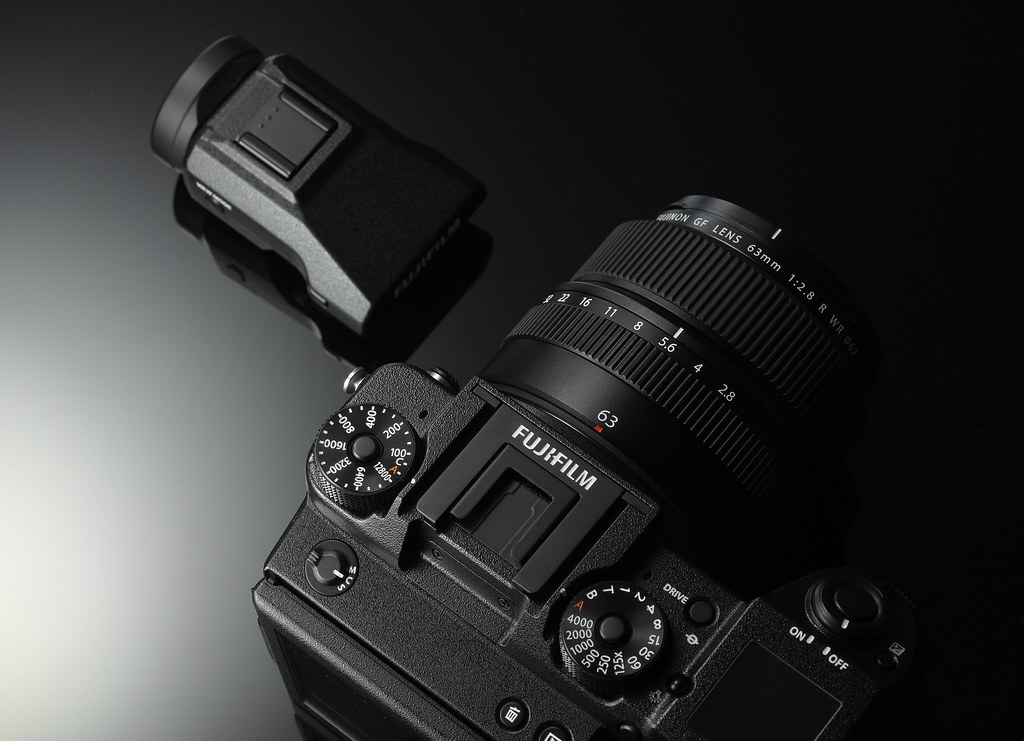
With a detachable EVF and a design that wants to build a bridge between the classic X series and modern cameras, the mirrorless Fujifilm GFX 50S was without a doubt the most exciting camera announcement as this year’s Photokina show in Cologne, Germany
Sensor and Processor
The sensor is using a traditional Bayer color filter array without an optical low-pass filter, and its 51.4 megapixels can be adapted to various aspect ratios, including 4:3 (default), 3:2, 1:1, 4:5, 6:7 and 6:17. Electronic First Curtain (EFC) and Electronic Shutter (ES) are yet to be implemented, but will most likely be part of the final product. Video will be available in Full-HD with 30 fps. Beware of rolling shutter, though!

The new 43.8 × 32.9mm sensor in the GFX 50S offers a resolution of more than 50 MP collects about four times the amount of light as Fuji’s APS-C sensors. The new G mount features a staggering number of twelve electronic lens contacts. What seams like overkill will most likely be very useful when it comes to adapting third-party lenses.
The GFX 50S uses the same X-Processor Pro imaging processor that is found in the X-Pro2 and X-T2. Since the sensor only supports contrast detection autofocus (CDAF), efficient AF algorithms are all the more important. The GFX 50S prototypes we tested behaved surprisingly snappy, and the best results can be achieved with lenses that feature inner focussing (IF). Sadly, among the six initial lenses, only the GF32-64mmF4 R LM WR zoom lens falls in that category. The start-up time of the camera is pleasingly short and comparable to other current X series models. However, the shooting intervals will be longer, with a number of 700 ms currently floating around. Den Rest des Beitrags lesen »
Erste Eindrücke: Das Fujinon XF23mmF2 R WR im Test
Der perfekte Kompromiss?
von Rico Pfirstinger
Nach dem erfolgreichen XF35mmF2 R WR bringt Fujifilm mit dem XF23mmF2 R WR eine zweite wetterfeste Festbrennweite mit mittlerer Lichtstärke auf den Markt.
Ihre Kegelform prädestiniert diese kompakten Objektive für die X-Pro2, die Mehrzahl der Benutzer dürfte sie jedoch an weniger exotischen Kameras wie der X-T10, X-T1, X-E2 und X-T2 verwenden.
Was Sie beim XF23mmF2 R WR erwartet – auch im Vergleich mit dem teureren XF23mmF1.4 R und der klassischen X100T –, verrät Ihnen unser kleiner Testbericht.
Kegel Reloaded: Das XF23mmF2 R WR (hier mit der mitgelieferten Kunststoff-Streulichtblende) macht an der X-Pro2 eine gute Figur. Wie schon das XF35mmF2 R WR wurde auch dieses Objektiv so entworfen, dass der Tubus nicht in den Bildrahmen des optischen Suchers hineinragt.
Überraschung! Das neue XF23mmF2 R WR ist eigentlich gar kein 23mm-Objektiv. Tatsächlich verfügt es über einen Bildwinkel, der über den des teureren XF23mmF1.4 R (und den des in der X100-Serie fest eingebauten 23mm-Objektivs) etwas hinausgeht. Die identischen Bildwinkel-Angaben in den offiziellen technischen Spezifikationen sind also irreführend, genügen laut Auskunft aus Tokio jedoch angeblich dem CIPA-Standard. Aha.
Weniger ist mehr: Dieser buchstäblich mit dem Rücken zur Wand gemachte Schnappschuss wäre mit dem kleineren Bildwinkel eines „normalen“ 23mm-Objektivs (etwa dem XF23mmF1.4 R) nicht möglich gewesen.
Die großzügige Spezifikation mag hierzulande für Stirnrunzeln sorgen, vielen Benutzern dürfte der größere Bildwinkel des neuen Objektivs jedoch entgegenkommen, schließlich eignet sich das XF23mmF2 F WR aufgrund seiner geringen Größe, der wetterfesten Ausführung und des blitzschnellen Autofokus (bis zu 0,05s) besonders gut für Reportage und Street-Fotografie – also Genres, bei denen es gerne etwas mehr Weitwinkel sein darf. Das Objektiv bietet sich außerdem für die Reise- und Landschaftsfotografie an, sodass wir es auch bei unserem im November und Dezember 2017 stattfindenden Fuji X Secrets Ultimate Workshop in Neuseeland einsetzen werden. Den Rest des Beitrags lesen »
First Look Review: Fujifilm X-T2
The Complete Camera
by Rico Pfirstinger
The X-T2 may be Fujifilm’s most important product launch since the introduction of the X-Series. Expanding on the best features of the X-T1 and X-Pro2, can this richly featured workhorse convince enthusiasts and pros to consider the X-Mount as a universal go-to system for all their photographic needs? Let’s find out in this first impressions review.

Getting serious: The X-T2 is Fujifilm’s high-powered successor to the X-T1.
Please note: This carefully researched and ridiculously comprehensive First Look Review of the Fujifilm X-T2 and Vertical Power Booster Grip is based on three different X-T2 pre-production models and more than ten different (and continuously evolving) beta firmware generations. The final hardware and firmware are expected to ship in the first half of September 2016.
***
The Fujifilm X-T2: 120 X-Pert Tips is available
Please click here to order the eBook edition in three different DRM-free formats (all for the price of one), including a 40% discount if you use coupon code XPERT40. German readers can click here to order the German editions.
***

The X-T2 will be available in September 2016. A matching camera-powered EF-X8 mini flashgun is included.
About two and a half years after the introduction of the successful X-T1, Fujifilm is getting serious with taking the X-series into „we can do everything“ territory. At first glance, the X-T2 looks very much like its predecessor—why change a concept that stood behind Fujifilm’s (so far) most successful X-series camera? However, it’s a different story on the inside. At several global launch events, Fujifilm has made it very clear that the X-T2 is supposed to address all photographic needs, including sports and action shooting. It’s supposed to be a „complete mirrorless camera“.
Ready for business
- X-T2 Specifications
- X-T2 Sample Images
- X-Pro2 Sample Images
- X-T2 AF Tracking Samples
- ISO Comparison
- Film Simulation Comparison (SOOC & Lightroom)
- Acros High-ISO-Samples
- Le Mans Classic Samples
- Theresienstadt Samples
- X-T2 First Look Article Samples
- 4K AF-C Video Tracking Demo 1
- 4K AF-C Video Tracking Demo 2
Compared to the X-T1, the X-T2 features dozens of changes and improvements. Here’s an overview in 40 bullet points:
- 24.3 MP X-Trans CMOS III sensor (Sony-built with 14 bit readout) with no anti-aliasing filter
- X-Processor Pro is four times as fast as the EXR II processor used in the X-T1 and offers improved image quality, better noise response and higher dynamic range
- improved ISO performance (about 1 stop better than the previous generation) with native ISO covering 200 to 12800, and extended ISO settings of 100, 25600 and 51200 (all with full RAW support)
- 100% faster sensor readout, resulting in improved AF tracking performance, a dramatically reduced minimum blackout time of only 114 ms, and a high 100 fps EVF refresh rate
- 0.005s display lag, 0.06s max. AF speed, 0.17s shooting interval, 0.045s shutter lag
- configurable AF-C modes to adapt the AF system to different sports and action shooting scenarios
- up to 11 fps burst speed in boost mode (14 fps when using the electronic shutter) with AF tracking
- 3, 4 or 5 fps slow burst mode (CL) with full live-view and CDAF support
- improved user interface and a new menu structure, including a custom My Menu with up to 16 entries
- DSLR-style „AF-ON“ option and new settings to individually engage/disengage focus and exposure lock when the shutter button is half-pressed
- more tactile dials and buttons and a new push-button lock mechanism for top-plate dials
- better grip and improved standard eyecup
- convenient focus stick to quickly move the autofocus frame or zone (with up to 325 AF frames to choose from)
- articulated rear screen works in landscape and portrait orientation
- new Vertical Power Booster Grip with two additional battery slots for extended shooting (1000+ images) and duplicate controls
- weather sealing with protection against rain, dust and freezing
- improved 0.77x electronic viewfinder with better image quality and twice the brightness of the previous model, now also featuring an auto brightness mode
- low-vibration 1/8000s mechanical shutter with 1/250s flash sync (supplemented by an electronic shutter with 1/32000s), rated for 150,000 shots
- new flash system offers high-speed sync, wireless TTL and multi-frame shooting (in concert with compatible flash units such as the new EF-X500)
- dual SD card slots (both support the ultra-fast UHS-II standard)
- improved hybrid autofocus system with pro-level subject tracking, a larger phase-detection area and more focus points (7 x 13 or 13 x 25 focus points, including either 7 x 7 or 13 x 13 phase detection points)
- automatic pixel mapping (to map out dead pixels)
- improved JPEG quality and new ACROS film simulation with ISO-controlled film grain and noise shaping
- expanded JPEG settings with additional options for contrast, noise reduction, sharpness, color saturation and film grain simulation
- broader ±2 EV bracketing and ±5 EV exposure compensation (along with expanded Push/Pull options in the camera’s built-in RAW converter)
- lossless RAW compression cuts RAW file size in half
- improved battery life indicator for up to three batteries at once (including a 1% accuracy display)
- enhanced electronic depth-of-field and distance scale with either pixel-based or film-based precision
- new center-weighted metering option
- WYSIWYG simulation of fixed dynamic range settings (DR200%, DR400%) in the live view and live histogram of the EVF and LCD, and enhanced highlight DR in Natural Live View mode
- dedicated video mode on DRIVE dial replaces video record button
- high-quality 4K video and HD video with 100 Mbit/s and oversampling (to minimize moiré and artifacts)
- vastly improved video focussing
- HDMI output to mirror EVF and LCD displays on monitors and HD beamers, or to record the live view with an HD frame grabber
- uncompressed 4:2:2 HD and 4K HDMI output to external recording devices, including „F-Log“ flat gamma 4K recording with expanded dynamic range
- threaded cable release option, fast USB 3.0 interface, 3.5mm mic input, 2.5mm remote control input, 3.5mm sound/headphone output (in the Vertical Power Booster Grip)
- USB charging for the in-body battery
- Vertical Power Booster Grip includes an external power input to power the camera and charge batteries inside the grip (2 hours charging time for two batteries)
- new NP-W126S battery with reduced heat dissemination (old batteries remain fully compatible)
- USB and wireless tethering options (after a future firmware update) with new and improved plug-ins for Adobe Lightroom
First Look Review: Fujifilm X70
by Rico Pfirstinger
Size Does Matter: The tiny Fujifilm X70 was inspired by the Ricoh GR II. Beyond their pocketable size and weight, both cameras share a Sony-built APS-C sensor with 16.3 MP, a 18.5mmF2.8 lens and plenty of street cred as premium compacts that you can carry with you all the time.
The X70 also incorporates the spirit of the X-series: a solid design with dials for everything, the functionality and image quality of the popular X-T10, and a very well-made lens. It also premieres a tiltable display with touch control for quick focusing, instant shutter release and intuitive image playback.
A black X70 (pre-production) pretending to be weather-resistant
Initially, the X70 was supposed to be introduced in concert with the X-T1 in early 2014, but Fujifilm shelved these plans in favor of the underrated X30. Of course, the new X70 of 2016 embodies all the major goodies and features that have been developed in the past two years: the new AF system with more sensitive PDAF pixels, AF zones and „3D tracking“, Classic Chrome, a new and improved user interface and now even a touchscreen.
Click here for full camera specs and here for full-size sample images.
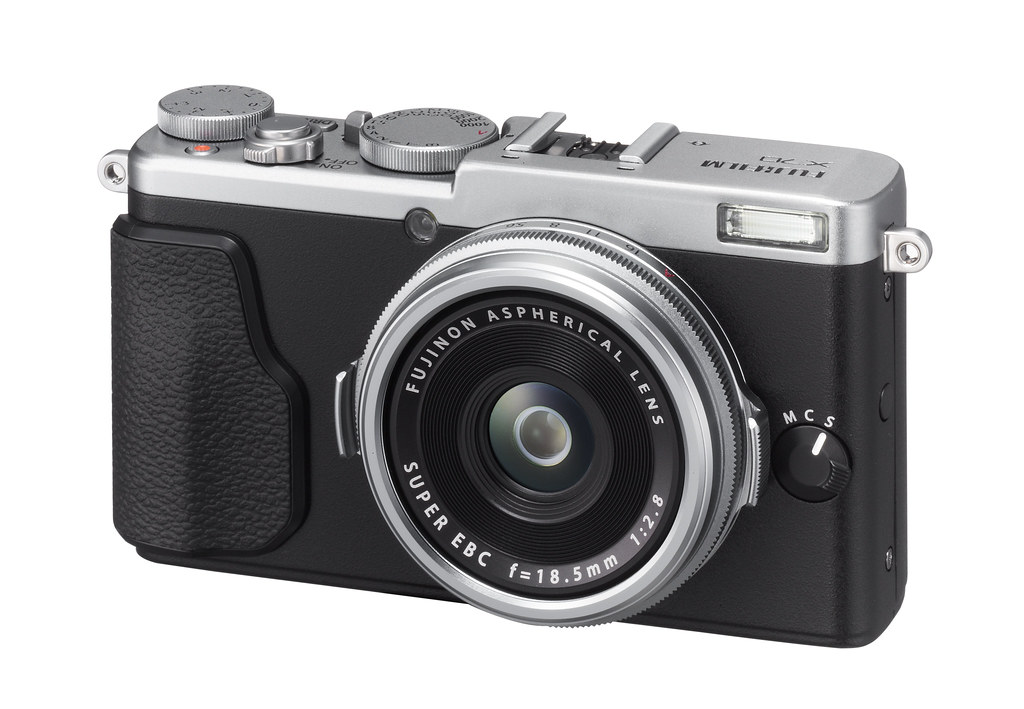
The X70 is available in black and silver versions
Main features include… Den Rest des Beitrags lesen »
